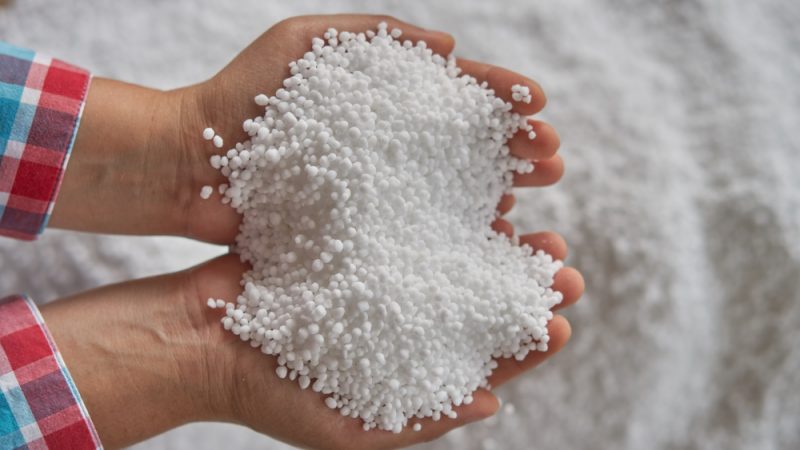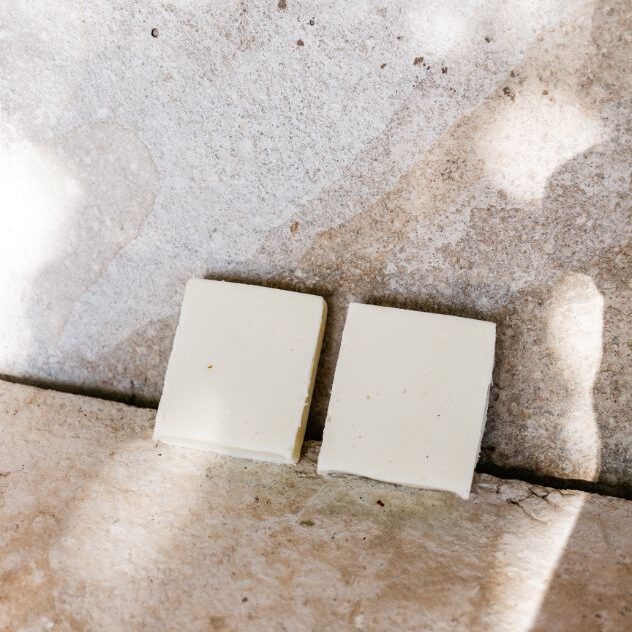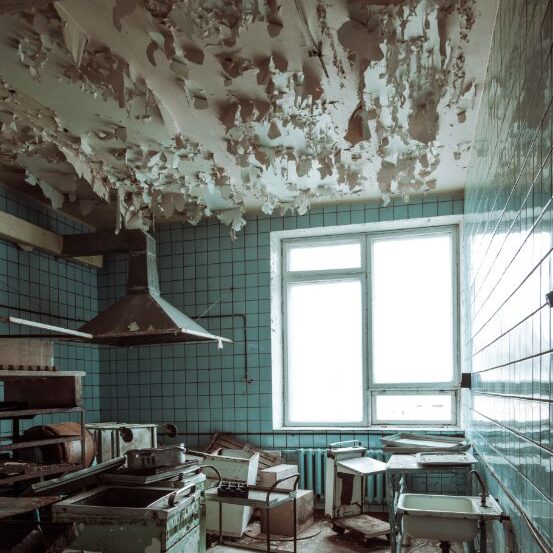Ammonia and chlorinated bleach are very similar in that they both kill mold on non-porous surfaces only and are both toxic. And even though we strongly advise against using dangerous chemicals like ammonia for mold removal, we’ll show you how.
I’ll try to break down the highly charged subject of ammonia and mold it into manageable chunks. Whether or not ammonia destroys mold and mycotoxins is a subject of considerable debate.
Ammonia gas is a versatile cleaning agent that can be used on a variety of surfaces, though it is typically used to fertilize crops. As a result of its interactions with other chemicals and its potency against specific pollutants, such as mold, ammonia’s use is also restricted.
Ammonia should not be applied to porous surfaces, despite the fact that it can effectively kill surface mold. Another sign of moisture is mature mycelium growth or visible mold formations. Even when applied to non-porous surfaces, mold spores will inevitably come into contact with the surface once more, restarting the fungus’ life cycle.
- What is Ammonia?
- Does Ammonia Kill Mold?
- How to Kill Surface Mold With Ammonia?
- Porous Vs Non-Porous Surfaces
- Can I Use Ammonia to Kill Mold on Clothes?
- How to Kill Mold on Clothes With Ammonia?
- When Should You Consider More Than Ammonia for Mold Removal?
- Helpful Mold Removal Tips
- FAQs
- Conclusion: Clean Your Mold Now
What is Ammonia?
Nitrogen and hydrogen atoms make up ammonia, also known as anhydrous ammonia (NH3). The environment and humans both naturally produce this colorless gas.
Fertilizer is where ammonia is most commonly used. Nitrogen makes up 80% of the atmosphere on Earth, but it cannot be used in this form. Nitrogen is drawn from the atmosphere and transformed into anhydrous ammonia using the Haber-Bosch process.
Ammonia doesn’t linger in the environment for very long because it is naturally renewed as part of the nitrogen cycle.
Its inclusion in cleaning products is a much more minor use. Ammonium Hydroxide, also known as household ammonia, can be purchased separately or added to branded cleaning products alongside other detergents.

Does Ammonia Kill Mold?
When handling ammonia, it’s critical to remember a few safety precautions. Ammonia is a harsh and toxic chemical when inhaled in large amounts, even though it successfully removes the toxins from mold.
Wearing gloves and a respirator will ensure that you are adequately protected from harsh chemicals. Last but not least, never combine ammonia and chlorine bleach because the result is a toxic mixture that can harm the respiratory system.
How to Kill Surface Mold With Ammonia?
The eyes, nose, mouth, and associated tracts must all be kept away from directly, as was mentioned above. When using it, personal protective equipment should always be worn.
To get started, you need:
- Gloves
- Ventilator
- Eye Protection
- Household Ammonia or “Clear Ammonia”
- Empty Spray Bottle
- Cloth/Sponge/Hard Bristle Brush
Here is how to kill mold with ammonia:
- Pour half clear ammonia and half water into the spray bottle to start, then shake vigorously. Most ammonium hydroxide or “Clear Ammonia” will already be mixed and should contain 3-5% NH3 in water. Note: The clear ammonia is dilute enough to be used on its own, but because it is so toxic, it is advised that you dilute it further.
- To let fumes escape, open windows nearby and turn on exhaust fans.
- Spray the mold liberally with ammonia and let it sit for one to three hours.
- Rinse and clean the area. On tough areas, use a sponge, cloth, or hard-bristled brush.
- Repeat as necessary.
Further Reading: How to Remove Mold from Inside Walls?
Porous Vs Non-Porous Surfaces

On non-porous surfaces only, ammonia should be applied. Ammonia has a strong, unpleasant smell that is best described as smelling like cat urine or sweat.
In other words, porous surfaces like drywall or wood may absorb the ammonia when the cleaning solution of ammonia is used, and you’re unlikely to remove it. Because it is corrosive, ammonia will erode these materials as well.
Additionally, ammonia is unable to saturate deeply within porous materials. Meaning that it won’t affect mold that may be developing inside the substrate but can kill mold on the surface.
Even used gypsum drywall from construction projects is used as animal bedding by people who keep livestock. To help mask ammonia-related odors, they use additives. Tile, ceramic, glass, granite, and porcelain are examples of non-porous surfaces. Ammonia is a common ingredient in household cleaners for counters, floors, and windows.
Can I Use Ammonia to Kill Mold on Clothes?
In a nutshell, yes, you can clean mold off clothing with ammonia. However, due to chlorine in the water source, washing clothes with ammonia has the same issues as washing clothes with ammonia and bleach.
Chlorine and ammonia combine to form chloramine gas, which is extremely toxic, as we learned above. Some people’s water supplies do contain chlorine, though not all do. You shouldn’t wash your clothes in ammonia unless you have a filter that removes all chlorine from your water.
How to Kill Mold on Clothes With Ammonia?
Ammonia can indeed kill and remove mold and mildew from clothing. Just keep in mind that using oxygen bleach to remove mold from clothing is a much safer alternative.

- Fill a small container with 50% water and 50% clear ammonia.
- You should make sure that the clothing you plan to remove mold from is completely dry. The moldy areas can be removed by rubbing them with a rag or cloth dipped in the ammonia/water solution. For twenty to thirty minutes, leave it on.
- After you’ve scrubbed all of the moldy areas and allowed enough time for the proper disinfection to take place, soak the clothes in the sink or bathtub to get rid of the ammonia.
- In the washing machine, wash your clothes.
When Should You Consider More Than Ammonia for Mold Removal?
Ammonia is effective at removing surface mold from suspended surfaces and hard, non-porous surfaces, as we’ve mentioned above. It might be time to look into alternatives if you find yourself repeatedly using the ammonia solution to kill the mold.
Mold spore germination results from favorable conditions for mold growth, according to mold removal company WaterMoldFire. A source of nutrients with carbon must be moist, there must also be oxygen present. Removing oxygen is unrealistic for obvious reasons. The same is true for nutrient sources that contain carbon, which is abundant and comes in the form of substrates like wood, drywall, and even dust.
For instance, dust (skin cells, insect excrement, etc.) may be the cause of mold growth on a non-porous surface.) and debris can accumulate on these surfaces and serve as a nutrient source.
One of the main causes of mold growth is moisture and humidity, so it’s best to get rid of them. Look for water leaks or a buildup of extra moisture. Use a dehumidifier to keep the relative humidity in the house between 30 and 50 percent if the problem is caused by high humidity levels.
Alternatively, you might rebuild the structure or dispose of the contaminated materials. But because there are mold spores everywhere, the surface mold will eventually come back if the underlying problems mentioned above aren’t resolved.
Helpful Mold Removal Tips

- On non-porous surfaces, ammonia works best.
- As hydrogen peroxide can better penetrate the small openings, try using it first to remove any mold from porous surfaces.
- Porous surfaces can occasionally be difficult to completely clean. It is probably best to throw out and replace your carpet or drywall if there is significant mold growth in those areas.
- For difficult-to-clean mold, use a scrub brush.
FAQs
What Kills Mold Better Vinegar Or Ammonia?
Yes, ammonia is a strong mold killer. In actuality, ammonia is a common ingredient in commercial mold cleaning solutions. It is more potent than vinegar and comparable to bleach; however, never combine the two because ammonia and bleach react to create toxic fumes.
What Kills Black Mold Instantly?
For a natural solution for getting rid of black mold, combine one part baking soda with five parts distilled white vinegar and five parts water in a spray bottle. As an alternative, you can use dish soap, bleach, all-purpose cleaners, or a mold and mildew remover that is chemical-based.
Does Ammonia Kill Mold on Wood?
Species of fungi called mold and mildew grow on moist surfaces, including wood furniture. Ammonia can be used to treat and eradicate both of these undesirable fungi; it is typically mixed with water and other common household items to help kill the spores.
Is Bleach Or Ammonia Better to Kill Mold?
On non-porous surfaces, bleach is just as effective at removing mold as ammonia. The only distinction is that toxic mold species’ toxins are neutralized by ammonia. Ammonia may therefore be your best option if you are unsure of the type of mold you are dealing with in order to ensure that any potential toxins are neutralized.
It is important to note that you should never combine the two cleaning products. Avoid using ammonia in areas where you use the beach and vice versa. When the fumes combine, these substances may be fatal.
Conclusion: Clean Your Mold Now
Does ammonia kill mold, then? Yes, it does, provided that it’s on a non-porous surface. However, due to its toxicity, we do not advise using it as it may irritate the skin, and breathing in the strong fumes may result in nose, throat, and respiratory issues.
Check your home to make sure there are no gaps where broken pipes or clogged gutters could allow unwelcome water to enter. Before mold has a chance to develop, take care of any moisture issues.





